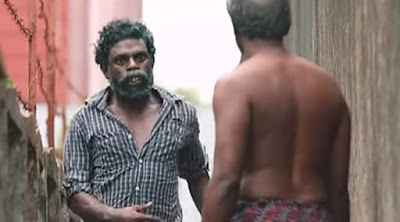Kammatipaadam-The Ruthlessly Buried History of Dalit
A good amount of hits in the 80s belonged to the supremely creative director Priyadarshan. But if you give a closer inspection to his lead characters, you will find one thing in common- an “upper middle class” jobless lad struggling to support his family.
All the famous stories told are owned by these “upper middle class” heroes and that is where director Rajeev Ravi stood up to break the preconceived notions of a Malayalam movie hero.
Kammatipaadam has its leading characters coming from the Dalit community – Ganga (Vinayakan), his brother Balan (Manikandan), and Anitha (Shaun Romy) to mention a few. “Someone should tell their stories too”; Rajeev Ravi once told in an interview about the Dalit representation in our films, and that is exactly what his much-acclaimed film Kammatipaadam does.
In the 1950s, when the EMS government ruled Kerala, lands were given for free to the underprivileged and homeless, mostly the Dalit community, under the Land Reforms Act. But with real estate skyrocketing and Ernakulam gaining recognition as a metro city, the Dalits were forced to sell their land to the real estate mafia. It is this lesser-known story of oppression and deceit that director Rajeev Ravi throws light on.
The entire film can be broken down into three elements –
i] A saga of friendship and homeland; this element undoubtedly forms the crux of the entire film. Childhood friends Krishna (an upper caste) and Ganga (a lower caste) are introduced to violence at a very young age and over the years it becomes a part of their lives and also the reason for their deteriorating friendship. But the only thing that still connects them is their love for their homeland, Kammatipaadam, where they spent a major portion of their life playing, fighting, and killing.
ii] The still persisting evils of caste-based oppression (apart from being tormented by the real-estate mafia) are thoughtfully put in certain scenes. For instance, there is a moment in the movie where a young Anitha comes to Krishna’s window medicines without stepping inside his house and is later shooed away by his sister.
iii] Evolution of a city from its lush green serene past to the concrete jungle it has now become. On his way back home, Krishna says to his Northie friend “Gauv Nahi Sheher” (Not village, it’s a city) when he inquiries about Krishna’s hometown.
Rajeev Ravi’s attempt in breaking the conventional notions of filmmaking is the beginning of a new era of creative and experimental visualization. Dulquer Salman as Krishna in Kammatipaadam offers one of the rarest and best performances to date. However, it is Vinayakan who steals most of the show as Ganga. Debutant Manikandan also offers a spectacular performance as Balan Chettan.
The supporting casts (Balan and Ganga’s father and grandfather and others) included a bunch of actors who contributed to making the film as realistic as possible.
However, Kammatipadaam is not everyone’s cup of tea and lags in certain portions. The film undoubtedly finds its place in Indian film history and as director Anurag Kashyap claims, ‘is one of the best gangster films ever made.
Image Courtesy: YouTube

I can’t stop talking about films, so I blog!
I started The FourthWall, my film blog, to share my thoughts on films and shows with fellow movie buffs, and over the years it has become my happy place. Come join in for some interesting conversations on cinema… and sometimes books and fashion!










4 thoughts on “Kammatipaadam-The Ruthlessly Buried History of Dalit”